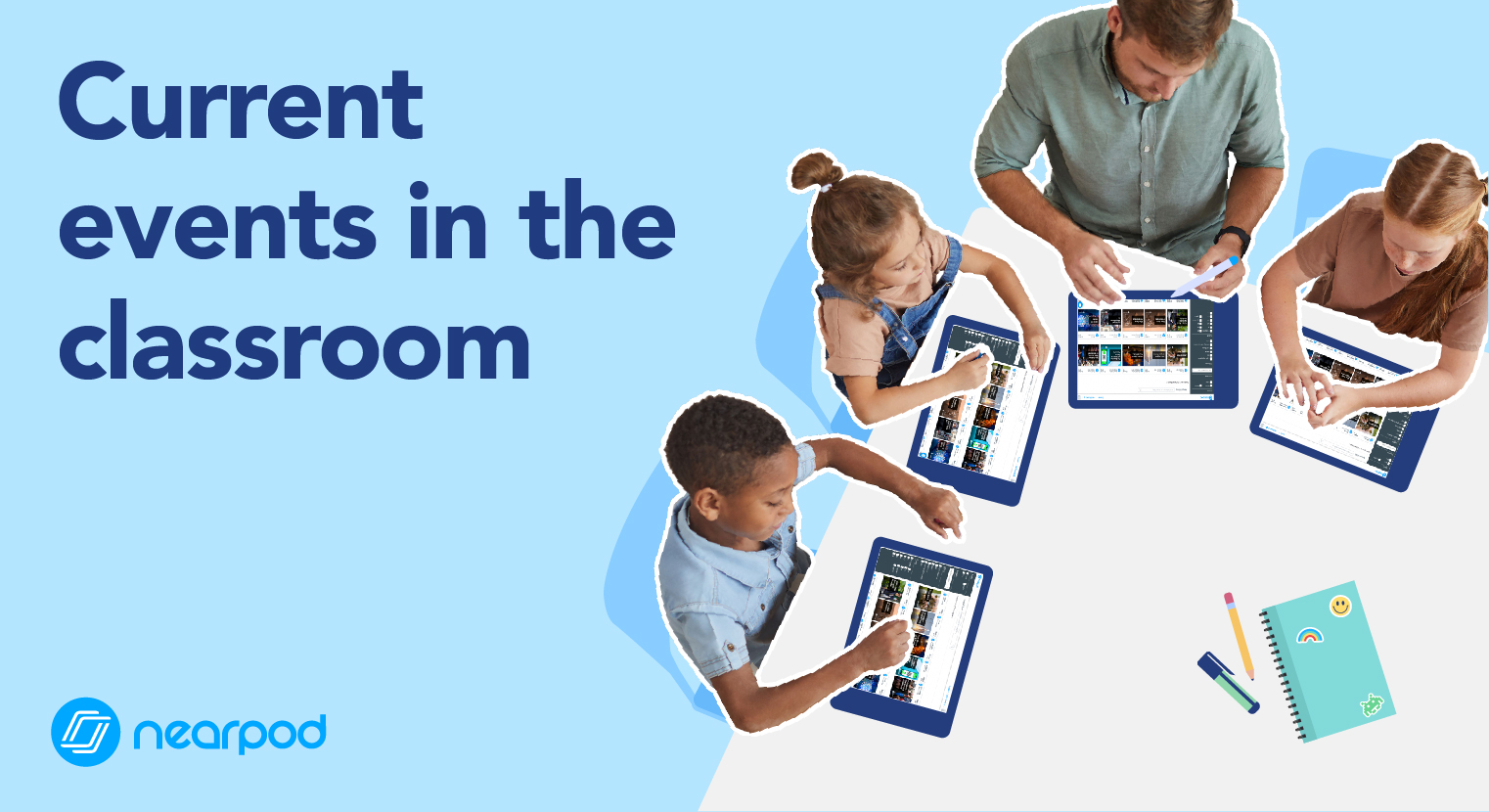
Current events in the classroom
Teaching current events in the classroom is an effective strategy for bringing subject areas together while making real-world connection for your students. The longer I’m in education, the more I find myself using words like “infused” or “integrated” to describe how I teach. Because that’s exactly what good teaching does: it integrates information from a variety of areas in a meaningful way. This can span from incorporating math in a science experiment to using ELA to explore a historical event. Integrating gets you the biggest bang for your buck in the classroom.
How can you teach current events in the classroom?
Too often, our curriculum leaves students asking “When am I going to use this in real life?” or “What does this have to do with me?” That’s why I love throwing in current events in the classroom that relate to our core content focus. I’ll pull from local news outlets, YouTube videos, even Tweets, to help connect content to student’s lives beyond the classroom. Using these resources as hooks or extensions is a great way to answer those “Why” questions.
In our recent Science unit on pollution and human impact, I used sources on issues local to our Florida community. We learned about beach erosion, water pollution, and invasive species like the lionfish and the Burmese python. Student engagement was through the roof! More than current and interesting, it was close enough to home that students felt they could actually make a difference. Watching my students not only invest in a topic, but want to take action, is enough to move this teacher to tears!
Resources like Nearpod are helpful for the busy teacher struggling to find current events. Once you start looking, you’ll find plenty of topics that can meet your needs.
Why are current events in the classroom important?
In our globally connected community, information is traveling at an unprecedented pace. Information is at our fingertips thanks to the internet––and the struggle to sift through it to find credible, balanced information is all too real (fake news, anyone?). It is more important than ever for our students to learn to listen to various viewpoints, synthesize information, and form their own opinions. It’s also important that they begin to see themselves as actors of change from a young age. Implementing current events in the classroom is a strategy that will keep students aware of real world problems and situations.
What do you do in a current event lesson?
The best way to start off a current event lesson is to see what students already know, or think they know, about the issue. Nearpod’s lessons use the Collaborate feature to spark conversation.

We must provide students with a variety of different viewpoint as they are bombarded with information and opinions daily. It is crucial that students learn to evaluate sources. Each Nearpod current events lesson does this using a variety of sources, such as online articles and informative videos. They encourage students to think for themselves about what they read or see. Throughout the entire lesson, students maintain a conversation about what is happening, what they heard, and how they feel about it.
The post-source opinion poll in Nearpod gives students three options “yes”, “no”, and “I need more information to decide.” This is powerful (and one of my favorite parts of the lessons). Too often, we make snap judgments on issues without understanding the full breadth of the issue. Each of these Nearpod lessons does provide a wealth of information, but reminds students to educate themselves fully before forming an opinion.
As the lesson wraps up, students revisit their initial thoughts on the issue to see if they have changed. I also like to encourage students to share what facts make them feel a certain way. They can continue to root their thinking in information, not blind opinion. Think-Pair-Share, Class Discussion, and Open-Ended Questions are all used for this purpose and serve as effective conclusions.
Nearpod’s Current Events
Nearpod’s growing Current Events library is constantly being updated with new lessons and fresh topics. It’s nice to know that their current events lessons will be just that: current! Nearpod’s Founder said it best when he asked: “When’s the last time your textbook got an update?”
For me…at least 5 years ago! There’s no question that Nearpod is leading the charge with engaging, relevant, and impactful current events in the classroom––another indicator of a curriculum well worth the investment.
Last week we published a lesson on #NotreDame , this week on the #BlackHolePicture – Q: did your textbooks get an update too? https://t.co/wRgCYO5PBS
— Guido Kovalskys (@GuidoNearpod) April 24, 2019
Flocabulary’s Week in Rap
The weekly current events units are a favorite among Flocabulary users. They spark meaningful discussion and critical thought, while aligning to the standards. You can learn more about the new look and feel here.


Kali is a tech-savvy elementary teacher whose passion for all things STEM fuels her innovation in the classroom and inspires other teachers to begin their own #edtech adventures.









